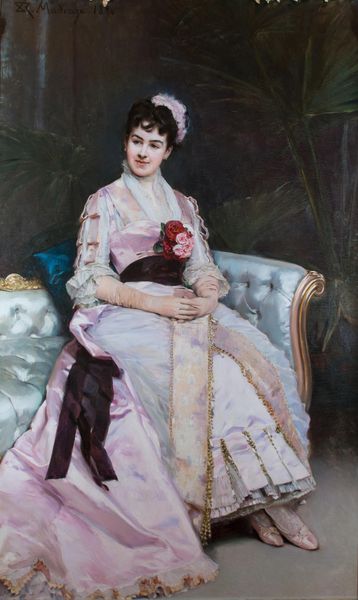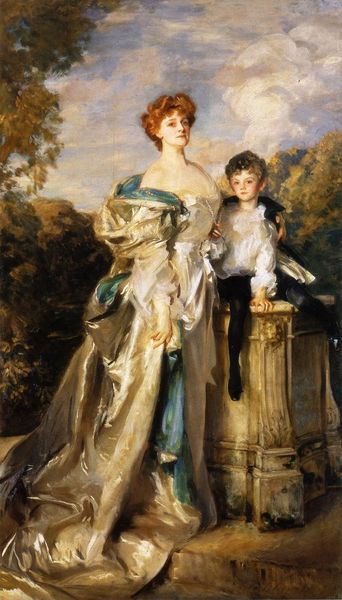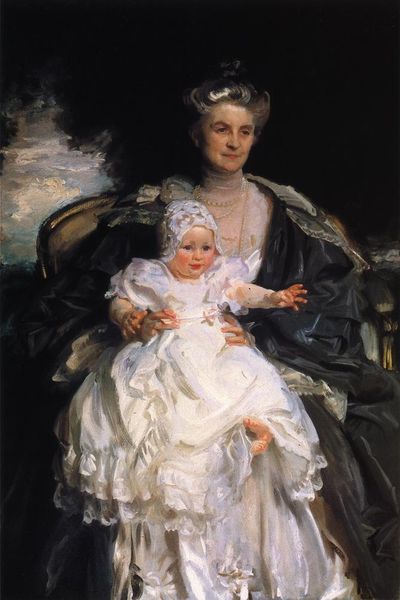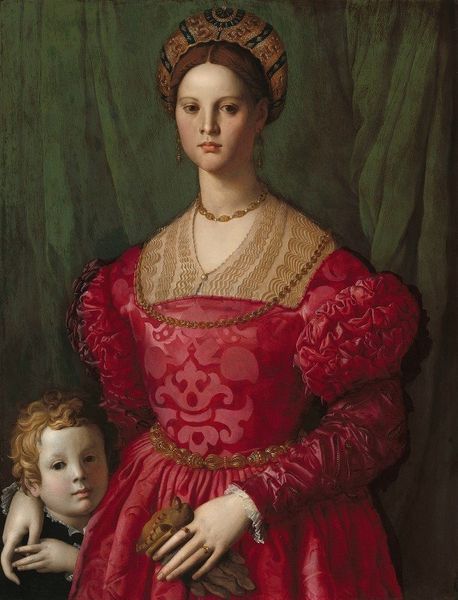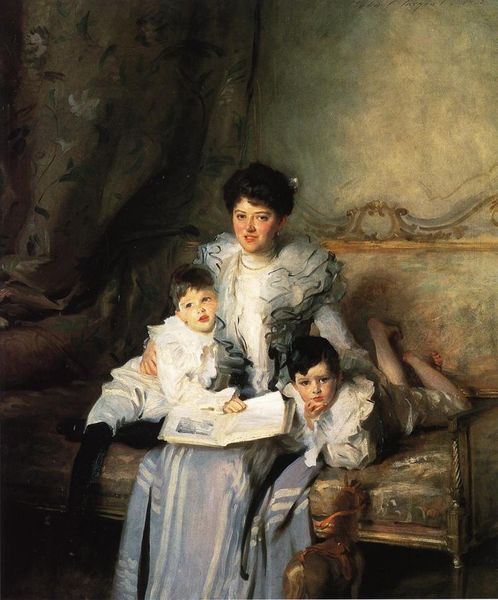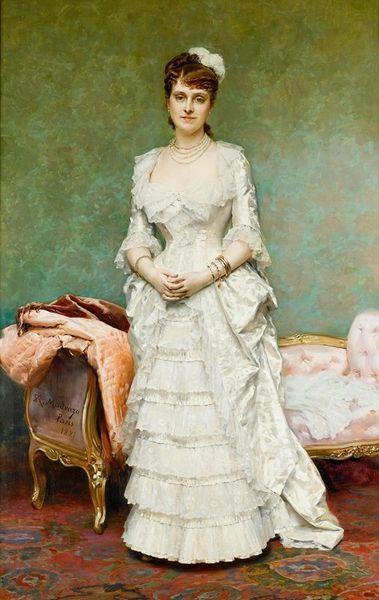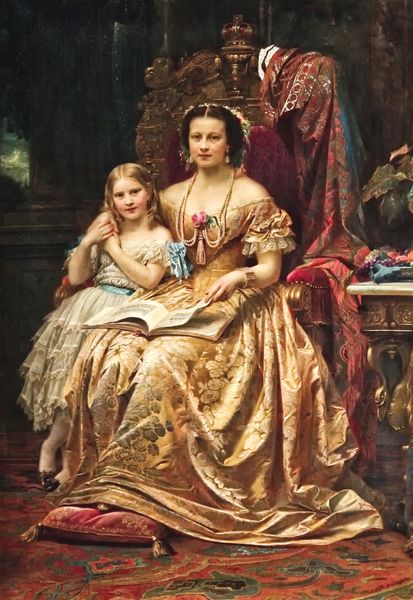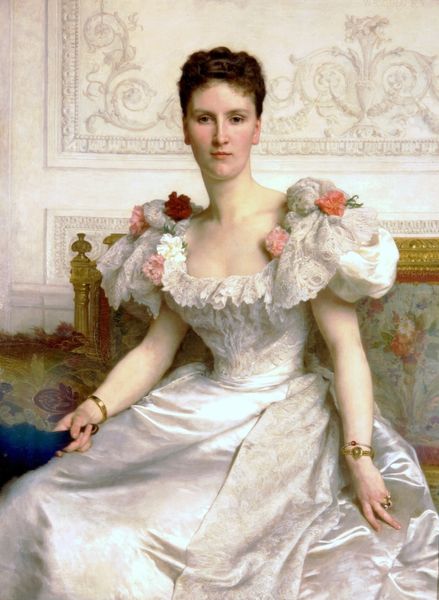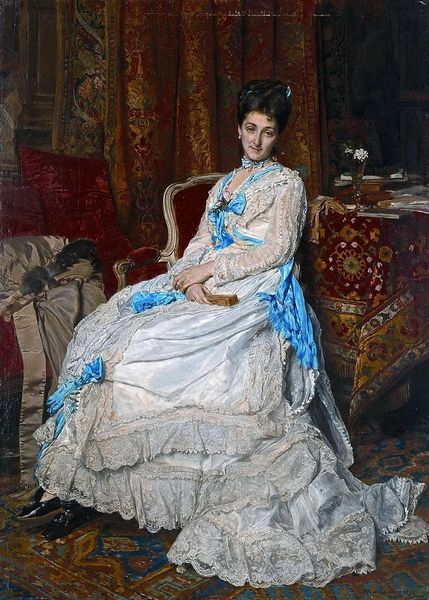
Copyright: Public Domain: Artvee
Editor: Here we have Raimundo de Madrazo’s "Portrait of Mrs. Clotilde de Cándamo and Her Son Carlos" from 1874, crafted with oil paint. I’m struck by the detail in her dress; it looks like real satin. What can you tell me about how the materials used reflect the painting's context? Curator: Exactly. The painting highlights the opulence associated with the upper class in the 19th century. Oil paint itself was a commodity, and the shimmering, satin-like fabric wasn't just painted; it was manufactured, traded, and represented a certain level of industrial output. The portrait aesthetic itself speaks volumes. Editor: So, the *materials* chosen really emphasize class. What about the time period, like how it reflects labor? Curator: The artistry underscores a distinct social structure. Think of the labour divisions evident: the artist creating the portrait, the factories producing fabrics, the tailors sewing the gown. This piece exemplifies the shift in artisanal skills to industrial manufacturing within the fashion domain. It also highlights gendered labour where, most probably, the seamstress and factory workers producing that stunning dress would have likely been female. What’s more, is this simply a representation, or is it perhaps a form of idealized consumerism? Editor: I hadn't considered all those layers of labor! I see the finished product and appreciate the beauty but not how much went into it. Could the act of commissioning the portrait itself be a commentary on the relationship between labour and consumption? Curator: Precisely! The De Cándamo family’s wealth becomes both the subject and object of artistic labor. By emphasizing material details, the artist displays access and excess, reflecting the family’s position in society, even while hinting at the unseen work involved. In short, this luxurious portrait prompts the important question about how wealth and production influence what we see as art. Editor: I'll never look at a portrait the same way again! Considering the labor and materials definitely offers a new understanding of the painting's message. Curator: Glad to offer a different lens, one where production meets representation.
Comments
No comments
Be the first to comment and join the conversation on the ultimate creative platform.
